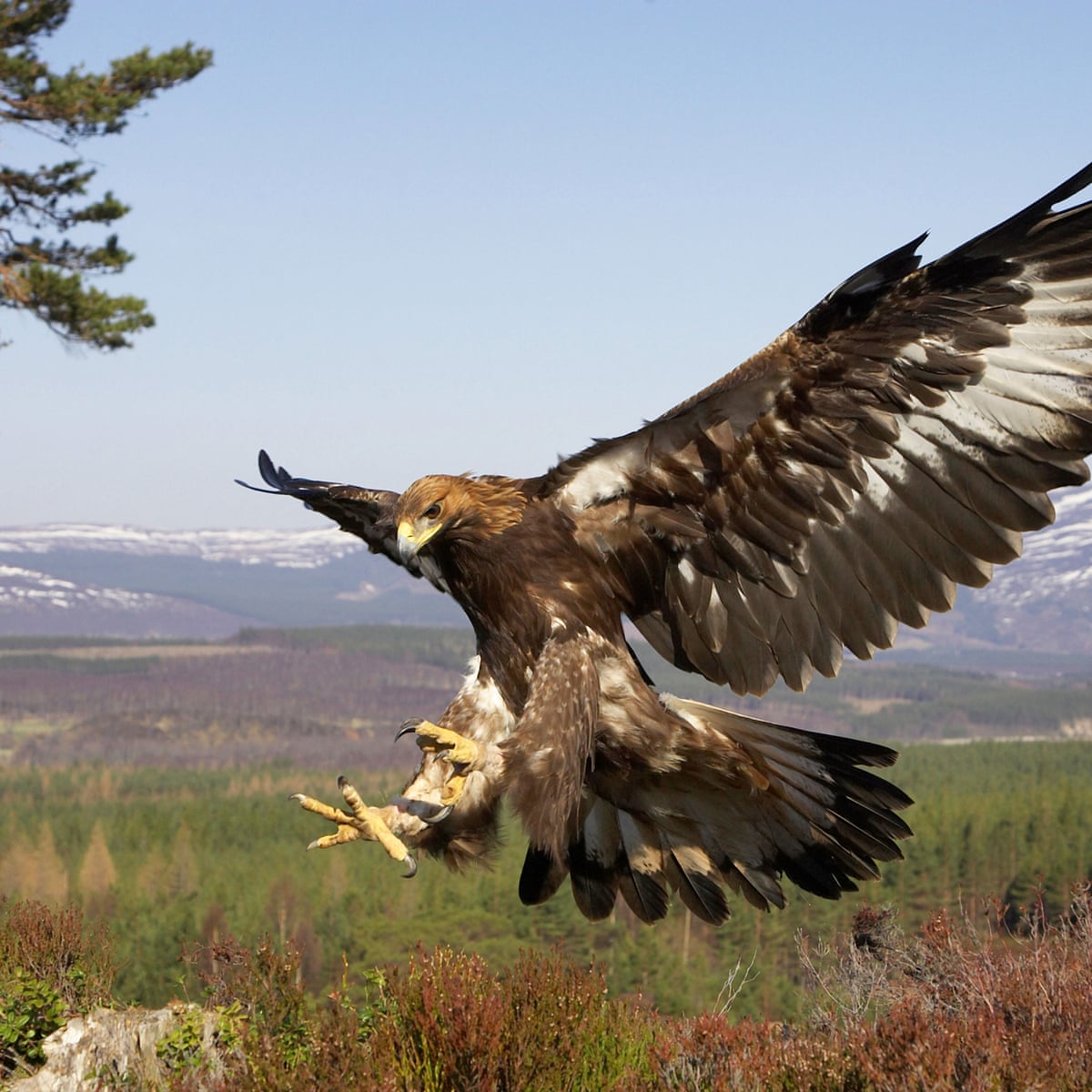Last Updated on February 9, 2024 by Fumipets
Unveiling the Majesty of the Skies: Exploring the World’s Largest Eagle Species
In the vast realm of avian wonders, eagles stand out as symbols of power, grace, and formidable beauty. Among these magnificent creatures, some species soar above the rest, both in wingspan and awe-inspiring presence.
In this exploration, we delve into the realm of the world’s largest eagle species, unveiling their impressive dimensions, habitats, and the captivating narratives that surround their existence. Join us as we take flight into the extraordinary world of these majestic raptors that command the skies with unmatched grandeur.
Largest Eagle Species
Even though eagles are large birds, certain species are larger than others. Even for a predatory bird, the largest eagle is incredibly gigantic by any measure, yet numerous species are reasonably large. Pelicans and marabou storks, for example, are bigger birds. That doesn’t take away from the awe-inspiring proportions of certain eagle species.
We’ll look at eight of the world’s biggest eagle species based on their overall length and body mass in this post. These are magnificent birds to see in person — or in photographs.
1. Steller’s Sea Eagle

The average weight of a Steller’s sea eagle is 15 pounds, however some have been discovered weighing up to 20 pounds. This is the heaviest eagle on the planet. It may, however, be smaller than the Harpy and Philippine eagle if you use wingspan or other metrics. It depends on the measures in question.
This eagle’s plumage is dark brown, with a brilliant yellow beak and talons. When it comes to eagles, they’re very unusual. They are found around the coasts of northern Asia, and the majority of them eat fish, however they do sometimes chase other waterbirds. They spend much of their time near water, as their name implies.
Various populations may be found across their area. The biggest is in Russia’s Kamchatka Peninsula, where roughly 4,000 of these birds reside on a regular basis. These eagles are considered vulnerable due to population fragmentation.
2. Philippine Eagle

According to some estimates, the Philippine eagle is the world’s biggest eagle species. They may weigh up to 17.5 pounds, with the average being 10 pounds. In most circumstances, they are equivalent to the Steller’s sea eagle. They do, however, have the longest wingspan. They have a slimmer, less muscular appearance.
Because they devour monkeys, they are also known as the monkey-eating eagle. As the name implies, they are endemic to the Philippines. They can only be found in a few spots in the Philippines. They have a limited range and are classified as highly endangered, owing to substantial habitat degradation in their already short range. Killing a Philippine eagle is punishable by up to 12 years in jail under Philippine law. They are a highly protected species of bird.
There are presently between 180 and 500 of these eagles in the wild, however because of conservation efforts, the population may be closer to 600.
3. Harpy Eagle

The Harpy eagle is often regarded as the world’s biggest eagle species, and it is by certain measures. The harpy eagle, on the other hand, is smaller than both the Steller’s sea eagle and the Philippine eagle. They are, nevertheless, exceedingly long and have a wide wingspan.
It is, nevertheless, the most powerful raptor in the jungle. It prefers to reside in the top canopy of the lowland rainforest. It used to have a rather wide range. However, because to population decline, its range has been significantly reduced. Despite this, because to their large residual population, these birds are considered near threatened.
Despite their reputation as top predators, these eagles are sometimes taken by large cats such as the ocelot. Their main food sources are tree-dwelling creatures such as monkeys and sloths. Sloths make up the majority of their food.
4. White-Tailed Eagle

The white-tailed eagle is a big bird. This species of common eagle may be found all throughout temperate Eurasia. As far west as Greenland and as far east as Japan, they may be found. Because of their wide range, they fall into the least worried group.
Despite their wide range, owing to human activities, they prefer to nest in certain regions. They are not gregarious birds and prefer to keep away from human groups. In certain places, this eagle is considered endangered or extinct, owing to pesticides and other human activities.
These birds spend the most of their time near huge bodies of water, such as the sea and freshwater lakes. For nesting, they need huge, ancient trees or cliffs. They are apex predators, yet when they get the opportunity, they will become scavengers. Fish and other water fowl are their main sources of food.
5. Martial Eagle

Sub-Saharan Africa is home to the martial eagle. They are one of the few members of a certain eagle genus that has feathering on the top portion of their leg, the tarsus. They are an opportunistic predator that eats a wide variety of prey, including mammals, birds, and reptiles. They aren’t choosy when it comes to food.
Even when compared to other eagles, they have a distinct hunting style. They soar to great heights before swooping down on their prey at breakneck speed. They live in the savanna’s forested sections. Because of their limited range and specialized habitat, they have become endangered.
6. Wedge-Tailed Eagle

Wedge-tailed eagles are not very large, but they are rather lengthy. As a result, they are classified as huge in several metrics. They are Australia’s biggest bird of prey, yet they may also be found in southern New Guinea. Their wings are massive, and their legs are entirely feathered. Their wedge-shaped tail is easily identifiable, which explains their name.
These birds are opportunistic predators, which means they consume practically everything. They fly pretty high and devour almost anything. They’ve been seen to work together to hunt bigger prey such as kangaroos and goats. They are dazzling birds capable of scaring goats over cliffs and killing them. They’ll herd flocks of sheep together to focus on the weakest animal.
These birds have been known to attack hang gliders because they are territorial. With their talons, they may destroy the fabric of these gliders. Unmanned aerial vehicles may be attacked and destroyed.
7. Crowned Eagle

A huge eagle that may be seen in Sub-Saharan Africa. They do not, however, cover all of Southern Africa. They like densely wooded places and forests. These birds consume largely animals, albeit the particular species varies on where they are found. They aren’t choosy eaters and will eat everything they can get their hands on.
These eagles are versatile, despite their favored environment. This has helped them to survive at a time when many other eagle species are being listed as endangered. However, due to the degradation of their native environment, their numbers are continuously dropping.
8. Golden Eagle

The golden eagle is fairly huge in terms of wingspan. In the Northern Hemisphere, they are one of the most well-known birds of prey. They have golden-brown plumage at the neck and are usually dark brown. They’re noted for their quickness and agility. They’ll devour everything, even hares, rabbits, and squirrels, if they can get their hands on it.
They have huge living quarters and construct gigantic nests. They breed in the same region for multiple years, however most breeding takes place in the spring. They are monogamous, and a mated couple will usually remain together throughout their lives.
Despite serious habitat loss, this eagle may be found all over the globe. With one of the greatest ranges of any eagle, they may be found over most of Eurasia and North America.
Q&A on the World’s Largest Eagle Species: A Glimpse into Their Majestic Existence
Which eagle species holds the title for the largest wingspan?
The Harpy Eagle (Harpia harpyja) claims the title for the largest wingspan among eagle species. These colossal raptors, native to the rainforests of Central and South America, can exhibit wingspans that reach up to an impressive 7 feet (2.1 meters).
Where does the Philippine Eagle, one of the largest eagles, call home?
The Philippine Eagle (Pithecophaga jefferyi), renowned for its size and unique appearance, is indigenous to the Philippines. These critically endangered eagles primarily inhabit the lush and mountainous forests of the archipelago.
How do Steller’s Sea Eagles differ from other large eagles?
Steller’s Sea Eagle (Haliaeetus pelagicus) is distinctive for its preference for coastal habitats, particularly along the northeastern coasts of Asia. With an imposing size and robust build, these eagles showcase an iconic white head and tail, setting them apart from other large eagle species.
Which African eagle species ranks among the largest and is known for its striking appearance?
The African Crowned Eagle (Stephanoaetus coronatus) stands out as one of the largest eagles in Africa. Recognized for its striking appearance, marked by a distinctive crown of feathers on its head, this eagle inhabits the dense forests of sub-Saharan Africa.
How do these large eagle species contribute to their ecosystems?
Large eagle species play crucial roles in maintaining ecological balance by regulating populations of prey species. Their predatory nature helps control the numbers of smaller mammals and birds, preventing overpopulation and ensuring a healthy ecosystem. Additionally, their presence often reflects the overall health of the habitats they inhabit.


















